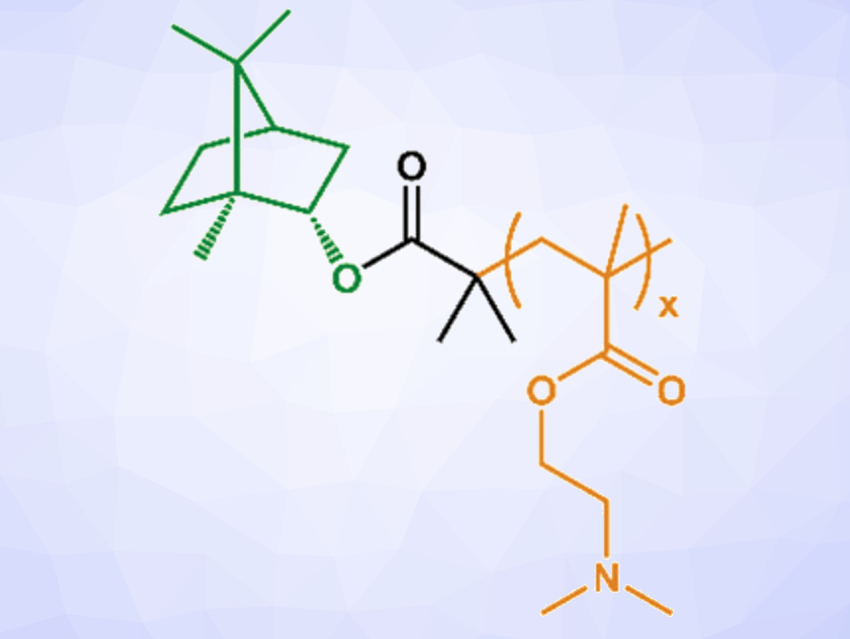Multi-drug resistant bacteria are a serious threat to human health. The development of new antimicrobial materials could help to reduce the use of antibiotics and the emergence of resistant bacteria strains. Agents that target the bacterial membrane, for example, are not likely to induce resistances. Such agents can, e.g., be applied to fabrics to create antimicrobial materials. However, leaching of the agents during use or washing can lead to environmental contamination and a loss of activity. Immobilizing the agents on the fabric could create non-leaching, durable, antibacterial fabrics.
Liangzhi Hong, Jianyu Su, South China University of Technology, Guangzhou, and colleagues have used (+)-borneol, a membrane-targeting monoterpenoid natural product that can be extracted from a variety of herbs, to create non-leaching antibacterial cotton fabrics. The small water solubility of borneol usually limits its antibacterial efficiency. The team converted borneol (pictured in green) to a water-soluble agent by adding a hydrophilic poly(N,N-dimethylethyl methacrylate) (PDMAEMA) polymer chain (pictured in orange). This hybrid compound was synthesized by first converting (+)-borneol to (+)-bornyl 2-bromoisobutyrate (BBI) by reacting it with α-bromoisobutyryl bromide. BBI was then used as the initiator in the atom transfer radical polymerization (ATRP) of the DMAEMA monomer to create the polymer chain.
The combination of the membrane‐active (+)-borneol and PDMAEMA has a higher antimicrobial activity against S. aureus and E. coli than each of the two components separately. Partially protonated PDMAEMA can disrupt the negatively charged bacterial membranes, as well as improve the water solubility of the antibacterial agent. The borneol-functionalized polymer can also inhibit the growth of methicillin‐resistant Staphylococcus aureus (MRSA), a resistant bacterium often found in hospitals.
The team then created a block copolymer that includes anchoring groups in addition to (+)-borneol and PDMAEMA (α-(+)-borneol-poly(N,N‘-dimethylethyl methacrylate)-b-poly(2-hydroxylethyl methacrylate-co-methyl methacrylate or BP-b-HM). The anchoring groups were used to bind the polymer onto a cotton fabric in a dip-coating process. The resulting fabric shows excellent anti-adhesive properties against bacteria and durable antimicrobial activity. The fabric retained its activity even after washing it 50 times. According to the researchers, the developed antibacterial polymer could be applied to a variety of surfaces to prevent bacterial infections.
- Durable Antibacterial Cotton Fabrics Based on Natural Borneol‐Derived Anti‐MRSA Agents,
Liu Yang, Chengdong Zhan, Xiangyue Huang, Liangzhi Hong, Liming Fang, Wen Wang, Jianyu Su,
Adv. Healthcare Mater. 2020.
https://doi.org/10.1002/adhm.202000186



